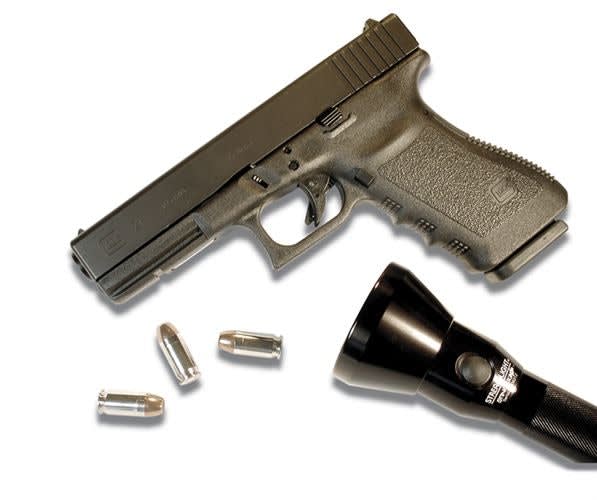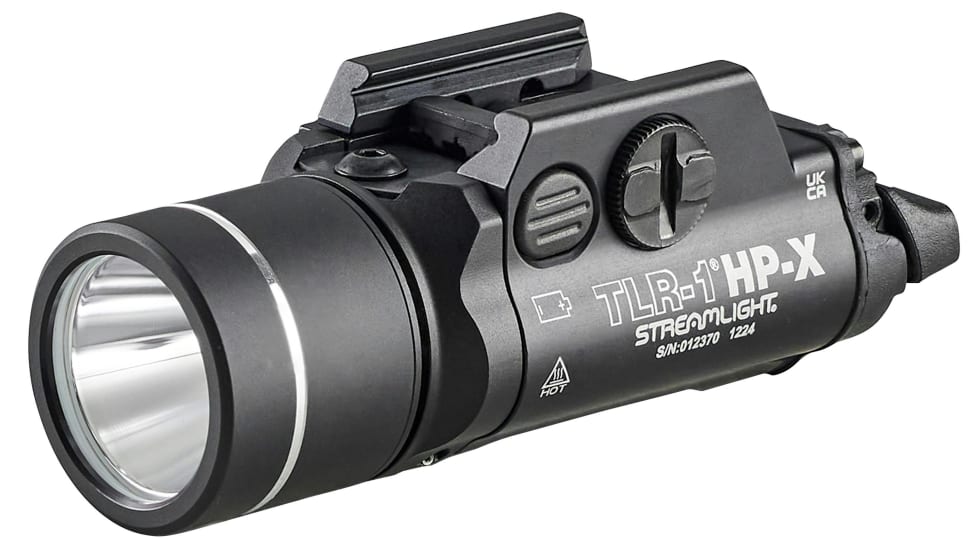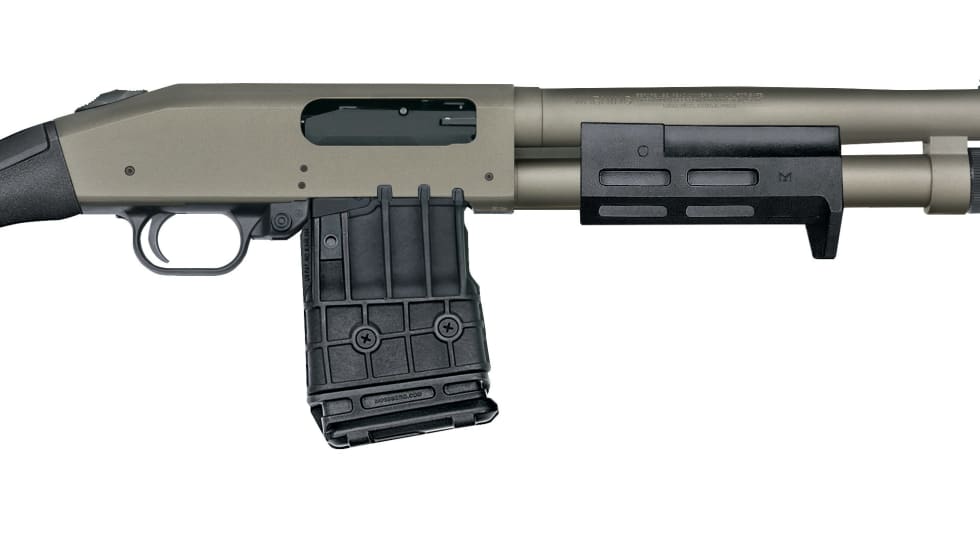Out of the Box
Our test gun was a brand new Glock 21. Right out of the surprisingly chintzy box (thin, flexible plastic), it functioned well, with all the controls working in the proper order. Magazines were a bit tough to load at first but all smoothed out in that department as the test evolved.
What can be said about Glocks that hasn't already been said before? They're black, they're plastic, they're authoritative, and, historically, they run as reliably as the 3:07 out of London's Victoria Station. When it comes to a duty semi-auto, all of these virtues make up the equation of the golden rule of gunfighting: It's gotta' work. Every time. Period.
Right off the bat, the girth of the slide was obvious. The 21 doesn't display the svelte lines of the 17 or the comfy carry options of the smaller 19. This is a brute of a handgun, and when you pick it up, you know you've got something serious in your hand. If you're petite or have munchkin-sized hands, stay away. The 21 is made for full-sized people. Having said that, however, we found smaller shooters could handle it, but most felt uncomfortable doing so and readily admitted it was simply too big for them to manage with a high level of confidence.
Of course, all that size pays dividends at times. The high grip and the fact the slide sits so low in a shooter's hand turns much of the 21's recoil impulse into a straight-back proposition with minimal muzzle flip. Combine these features with a slight frame-flex due to the polymer frame, and the broad back strap and suddenly the fearsome .45 is turned into a tame puppy. Recoil, even from stout 230 gr. .45 ACP loads, seemed soft and manageable.










